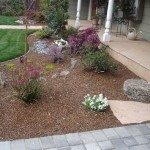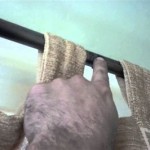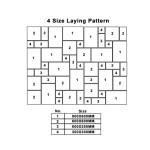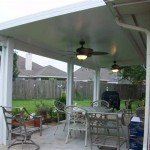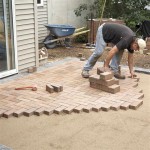How Much Does It Cost to Build Brick Paver Patios?
Constructing a brick paver patio enhances a property’s aesthetic appeal and provides a durable, functional outdoor living space. However, understanding the costs involved is crucial for budgeting and making informed decisions. The total expense of a brick paver patio project is influenced by several interconnected factors, including the size of the patio, the type and quality of brick pavers used, the complexity of the design, site preparation requirements, and labor costs. It is essential for property owners to conduct thorough research and obtain detailed estimates to accurately assess the financial investment required.
The price of installing a brick paver patio is typically calculated on a per-square-foot basis. This method allows for a standardized way to estimate costs that scales proportionally to the size of the patio. The average cost range generally falls between $10 and $30 per square foot. This range encompasses various scenarios, from simple, straightforward installations using basic brick pavers to more intricate designs incorporating premium materials and complex patterns. It is important to note that this is a broad estimate, and actual costs can vary significantly depending on specific project requirements and local market conditions.
For example, a small, unadorned patio using standard clay bricks laid in a simple running bond pattern might fall on the lower end of the price range. Conversely, a large, elaborate patio incorporating custom-cut pavers, intricate patterns like herringbone or basketweave, and additional features such as borders or retaining walls will likely incur costs at the higher end of the spectrum. Furthermore, factors such as the accessibility of the site and the need for extensive excavation or grading can also contribute to the overall project cost.
Key Factors Influencing Brick Paver Patio Costs
Several key elements dictate the overall expenditure on a brick paver patio project. Understanding these contributing factors allows for a more precise estimation of the budget and enables homeowners to make informed choices that align with their financial constraints and design preferences. The following sections outline some of the most influential aspects that directly impact the total cost.
Firstly, the type and quality of brick pavers exert a considerable influence on the price. Brick pavers are available in a wide array of materials, colors, sizes, and finishes, each with its own associated cost. Traditional clay bricks are generally more affordable than concrete pavers or natural stone pavers. Within each material category, there are further variations in quality and appearance that affect pricing. For instance, tumbled or antiqued pavers, which offer a weathered, rustic look, often command a higher price than standard pavers. Similarly, pavers with unique colors or textures may also increase the material cost. Selecting the appropriate paver type involves balancing aesthetic preferences with budgetary considerations.
Secondly, the size and complexity of the patio design play a pivotal role in determining the overall cost. Larger patios naturally require more materials and labor, leading to higher expenses. Furthermore, intricate designs involving complex patterns, curves, or multiple levels invariably increase the installation time and require specialized skills, thus driving up the labor costs. Simple, rectangular patios with straightforward patterns are generally more cost-effective to install than patios with elaborate shapes or intricate designs. The complexity of the design also impacts the amount of cutting and fitting required, which can increase material waste and labor hours.
Finally, site preparation is a critical aspect of any brick paver patio project and can significantly influence the total cost. Proper site preparation is essential for ensuring the long-term stability and durability of the patio. This process typically involves excavation, grading, and the installation of a compacted base layer consisting of gravel and sand. If the site has uneven terrain, poor drainage, or existing structures that need to be removed, the site preparation costs can increase substantially. In some cases, additional steps such as retaining wall construction or drainage system installation may be necessary, further contributing to the overall expense. The amount of labor and materials required for site preparation can vary significantly depending on the specific site conditions.
Breaking Down the Costs: Materials, Labor, and Equipment
To gain a comprehensive understanding of the expense associated with building a brick paver patio, it is beneficial to dissect the overall cost into its constituent components: materials, labor, and equipment. By examining each element individually, property owners can better assess the value they are receiving and make informed decisions regarding their investment.
The cost of materials typically accounts for a significant portion of the total project expenditure. This includes the brick pavers themselves, as well as other essential materials such as base aggregates (gravel and sand), edging materials, polymeric sand for joint filling, and any necessary adhesives or sealants. The selection of brick pavers will have a direct impact on the material costs, as different types of pavers vary significantly in price. The quantity of base aggregates required will depend on the size of the patio and the soil conditions at the site. Edging materials, such as concrete curbing or plastic edging, are used to contain the pavers and prevent them from shifting over time. Polymeric sand is used to fill the joints between the pavers, providing stability and preventing weed growth. Depending on the specific application, adhesives or sealants may be used to enhance the durability and longevity of the patio. Thorough research and comparison shopping can help homeowners identify cost-effective material options without compromising on quality.
Labor costs represent another substantial portion of the overall project expense. The labor component includes the cost of hiring skilled professionals to perform the excavation, grading, paver installation, and finishing work. Labor rates can vary depending on factors such as the location, the experience and expertise of the installers, and the complexity of the project. Intricate designs and challenging site conditions will typically require more skilled labor and longer installation times, resulting in higher labor costs. It is advisable to obtain multiple quotes from reputable contractors to ensure competitive pricing and to assess the qualifications and experience of the installers. A detailed contract outlining the scope of work, payment schedule, and warranty terms is essential for protecting the homeowner's interests.
Equipment costs, while often a smaller portion of the overall expense, should not be overlooked. Depending on the scope and complexity of the project, specialized equipment may be required for excavation, grading, and compaction. This could include machinery such as excavators, skid steers, plate compactors, and concrete saws. Contractors typically factor equipment rental or ownership costs into their overall pricing. In some cases, homeowners may be able to reduce costs by providing their own equipment, but this requires careful consideration of safety and liability issues. It is important to ensure that the contractor has access to the necessary equipment to complete the job efficiently and effectively.
Strategies for Saving Money on a Brick Paver Patio
While building a brick paver patio represents a significant investment, there are several strategies homeowners can employ to potentially reduce costs without sacrificing quality or aesthetics. Prudent planning, careful material selection, and a willingness to undertake certain aspects of the project can all contribute to cost savings.
One effective strategy is to simplify the patio design. Opting for a straightforward rectangular or square shape rather than complex curves or angles can significantly reduce the amount of cutting and fitting required, thereby minimizing material waste and labor costs. Similarly, selecting a simple paver pattern, such as a running bond or herringbone, can streamline the installation process and lower labor expenses. Avoiding intricate designs or custom features can result in substantial cost savings without compromising the overall appeal of the patio.
Another potential cost-saving measure is to consider alternative paver materials. While traditional clay bricks offer a classic aesthetic, concrete pavers can often provide a more cost-effective solution, particularly for larger patio projects. Concrete pavers are available in a wide range of colors, shapes, and textures, and can often mimic the look of natural stone or clay bricks at a lower price point. Comparing prices and evaluating the long-term durability and maintenance requirements of different paver materials can help homeowners make informed decisions that align with their budget.
Homeowners may also consider undertaking certain aspects of the project themselves to reduce labor costs. For example, homeowners with the necessary skills and equipment could handle the site preparation work, such as excavation and grading, or assist with the paver installation. However, it is important to accurately assess one's capabilities and to prioritize safety. Incorrectly performed site preparation or paver installation can lead to structural problems and costly repairs down the line. If homeowners are uncertain about their ability to complete a particular task, it is best to leave it to the professionals. Careful planning and coordination with the contractor are essential for ensuring a successful DIY project.

How Much Does It Cost To Build A Paver Patio

How Much Does A Paver Patio Cost To Install 2025 Data Angi

How Much Does A Paver Patio Cost

How Much Does A Brick Patio Installation Cost In Naperville Il

Cost To Install A Patio 2025 Calculator

How Much Does A Brick Patio Cost 2025

How To Build A Patio In Weekend Fine Gardening

How To Build A Paver Patio Young House Love

How To Build A Patio That Will Last Lifetime Easton Outdoors

How Much Does It Cost To Build A Paver Patio In Northwest Arkansas


